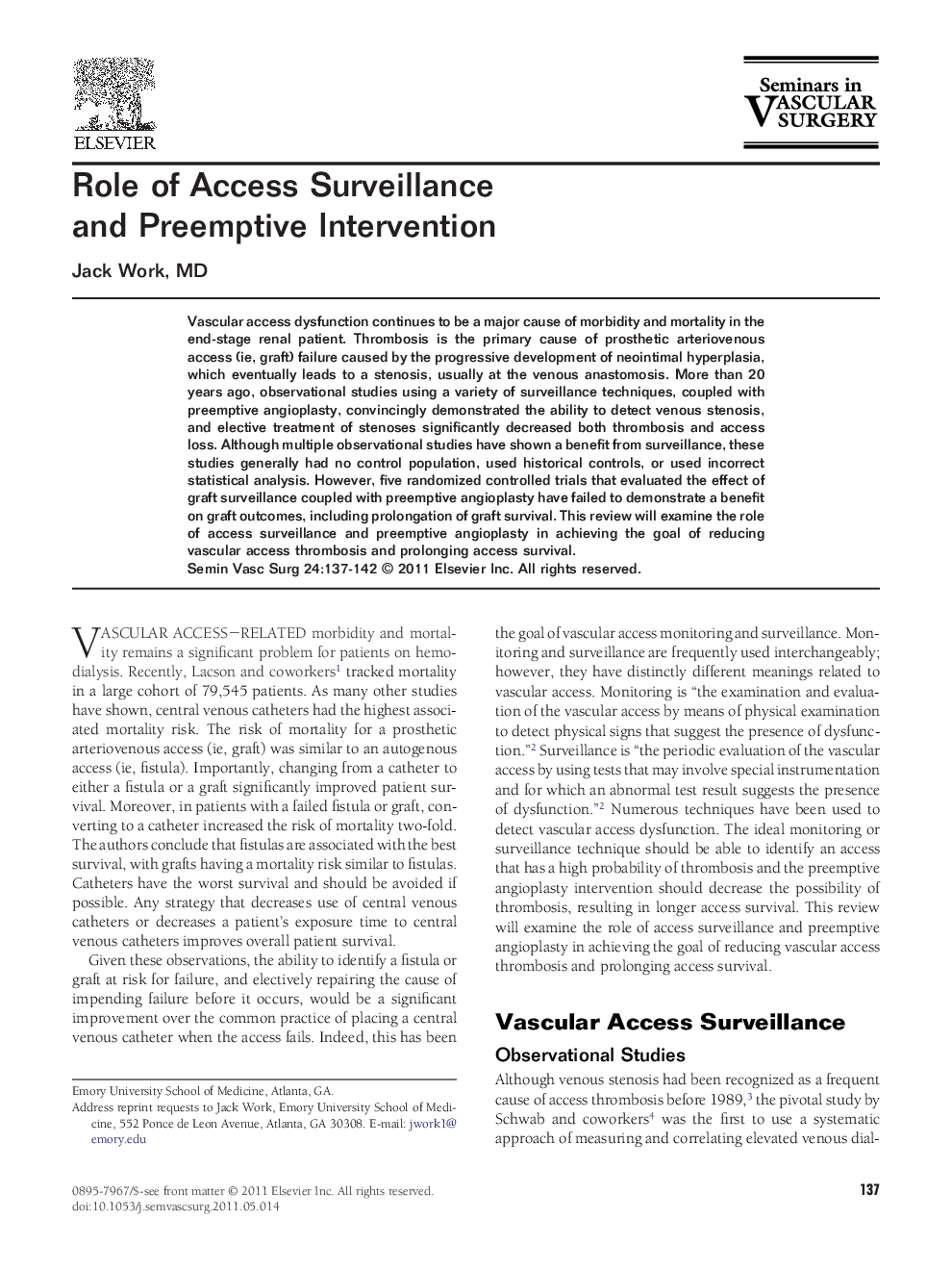| Article ID | Journal | Published Year | Pages | File Type |
|---|---|---|---|---|
| 3026222 | Seminars in Vascular Surgery | 2011 | 6 Pages |
Vascular access dysfunction continues to be a major cause of morbidity and mortality in the end-stage renal patient. Thrombosis is the primary cause of prosthetic arteriovenous access (ie, graft) failure caused by the progressive development of neointimal hyperplasia, which eventually leads to a stenosis, usually at the venous anastomosis. More than 20 years ago, observational studies using a variety of surveillance techniques, coupled with preemptive angioplasty, convincingly demonstrated the ability to detect venous stenosis, and elective treatment of stenoses significantly decreased both thrombosis and access loss. Although multiple observational studies have shown a benefit from surveillance, these studies generally had no control population, used historical controls, or used incorrect statistical analysis. However, five randomized controlled trials that evaluated the effect of graft surveillance coupled with preemptive angioplasty have failed to demonstrate a benefit on graft outcomes, including prolongation of graft survival. This review will examine the role of access surveillance and preemptive angioplasty in achieving the goal of reducing vascular access thrombosis and prolonging access survival.
